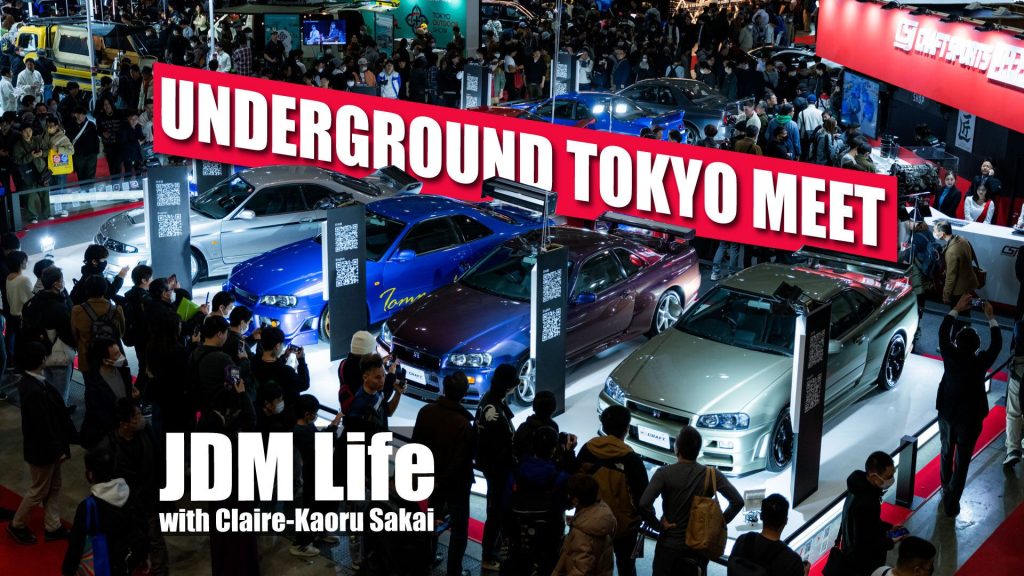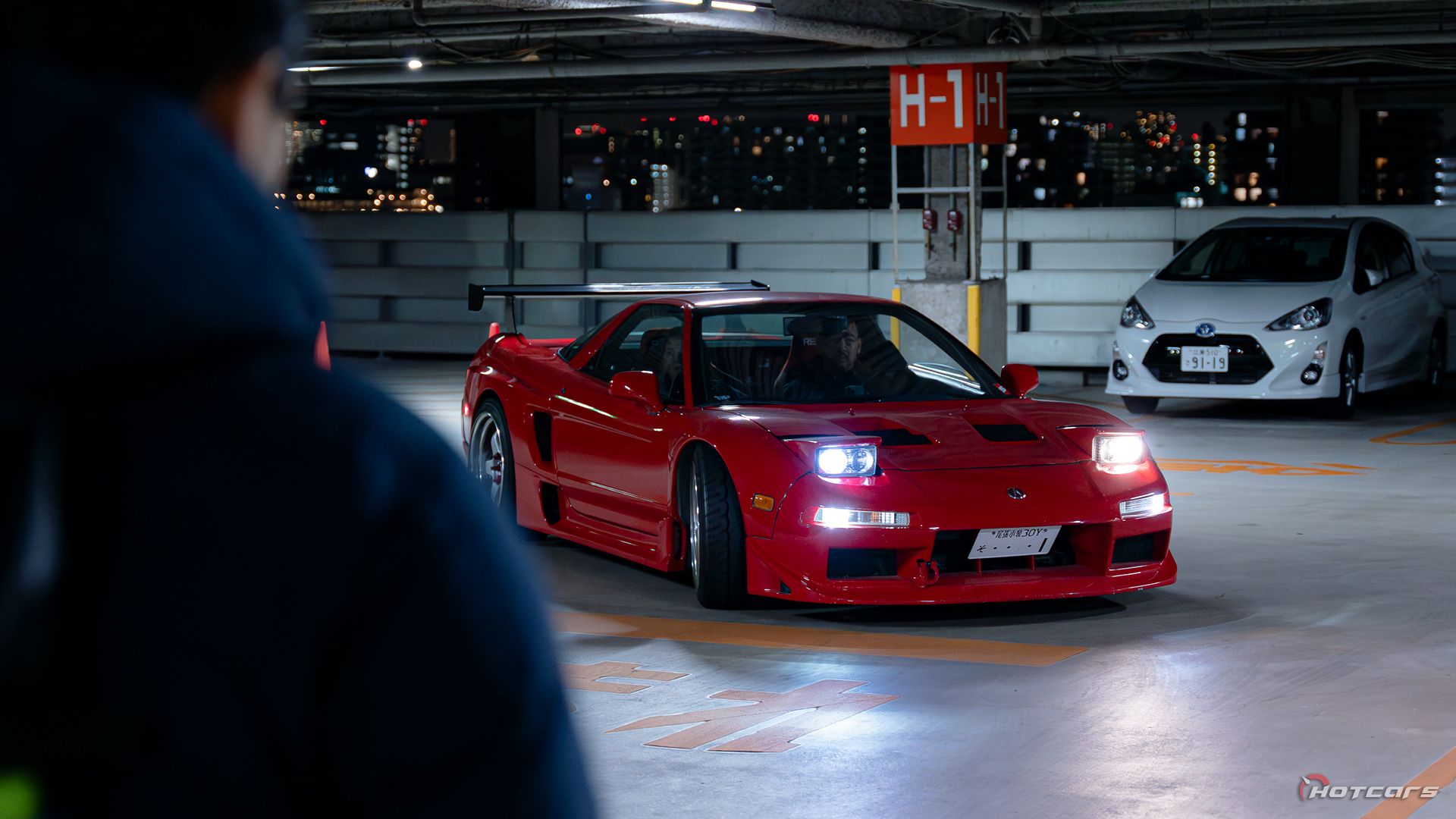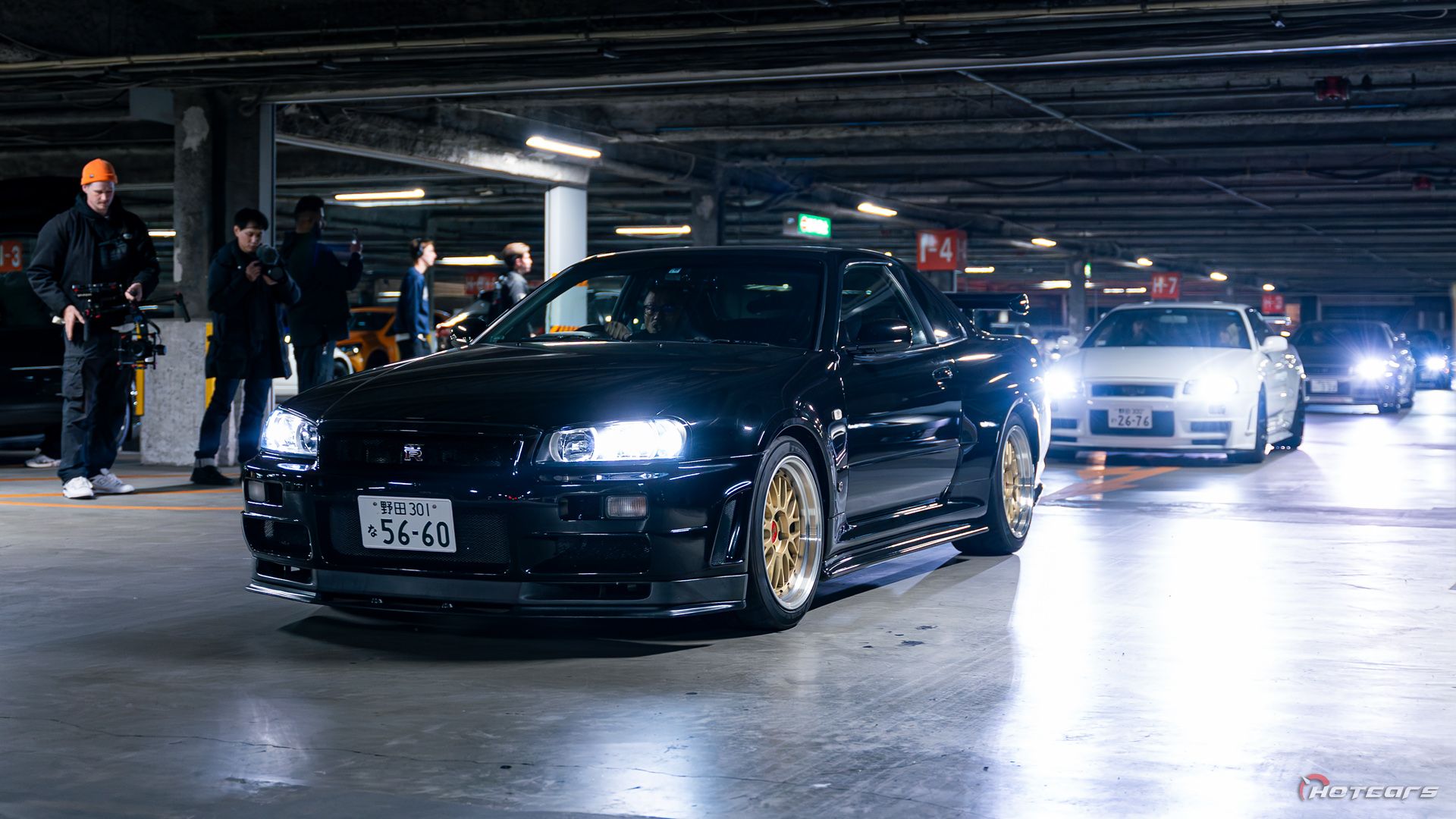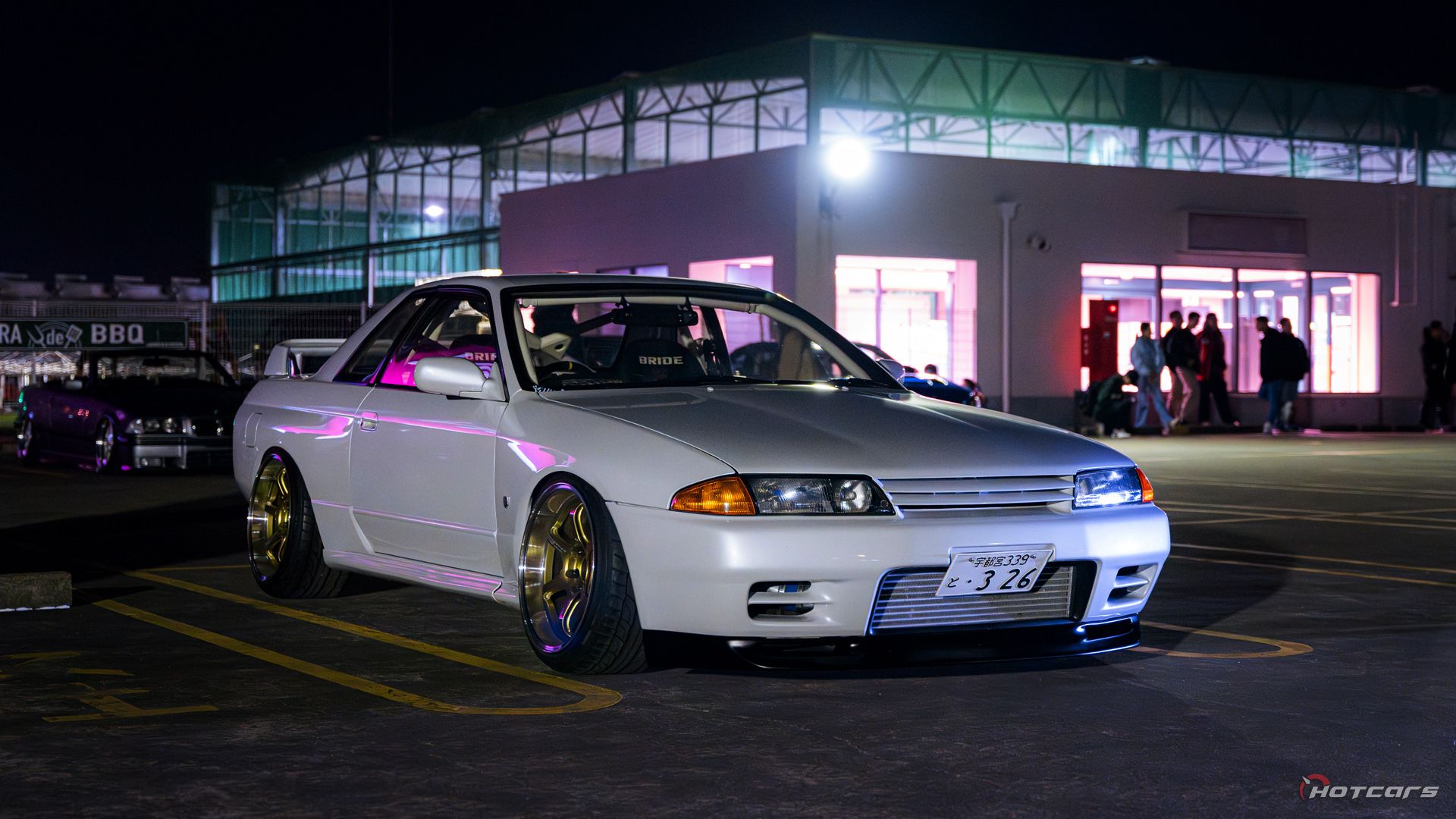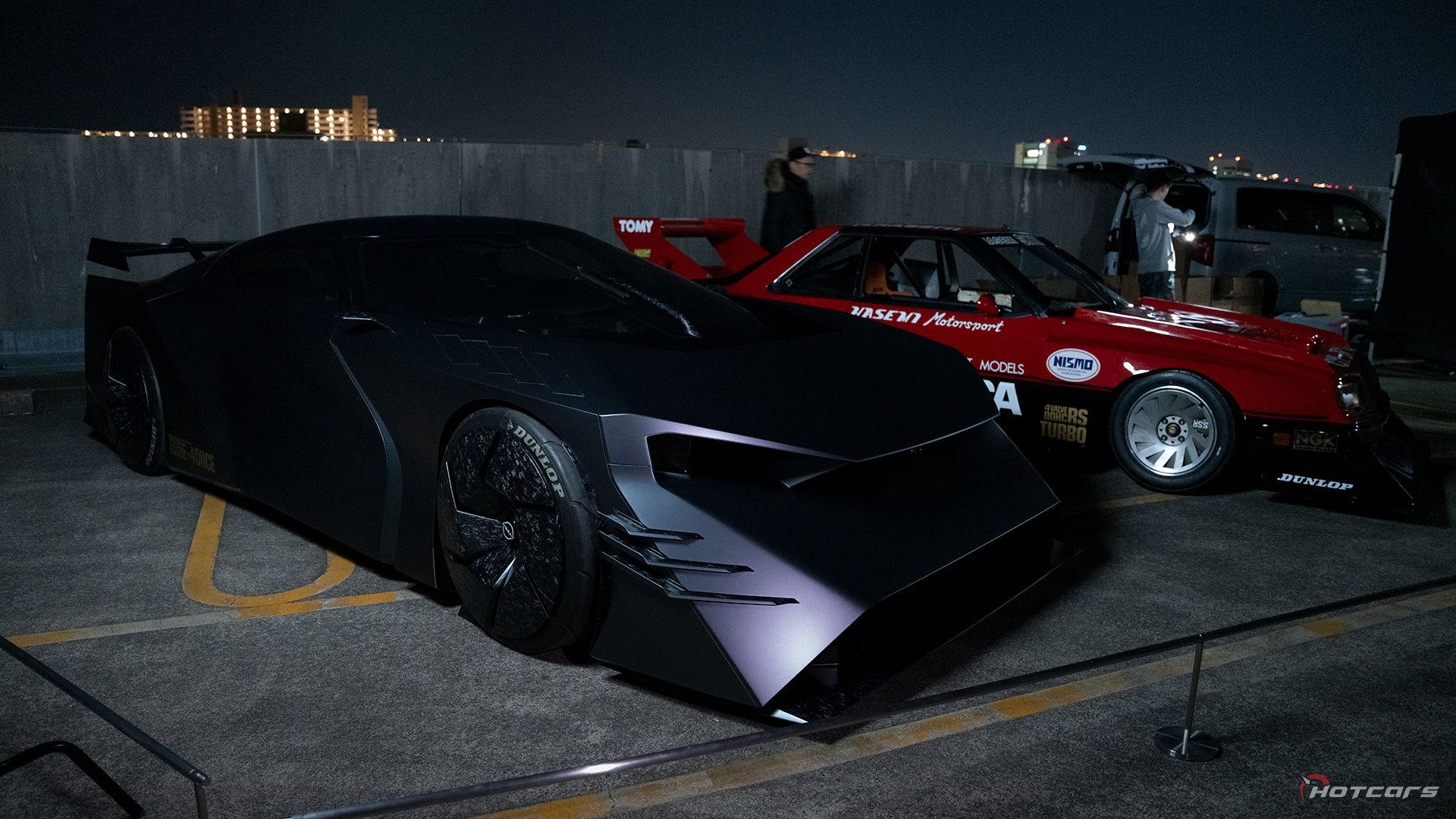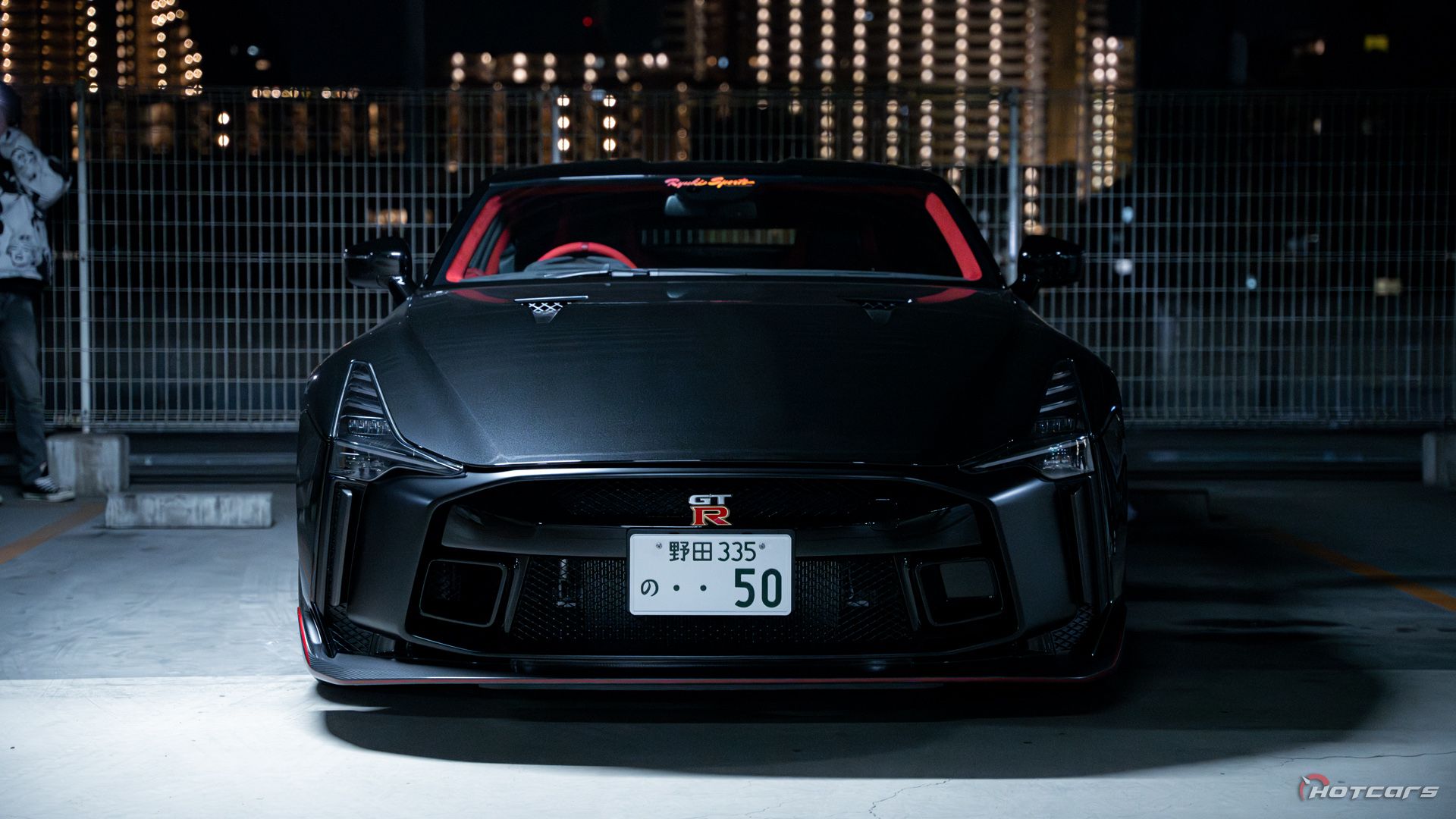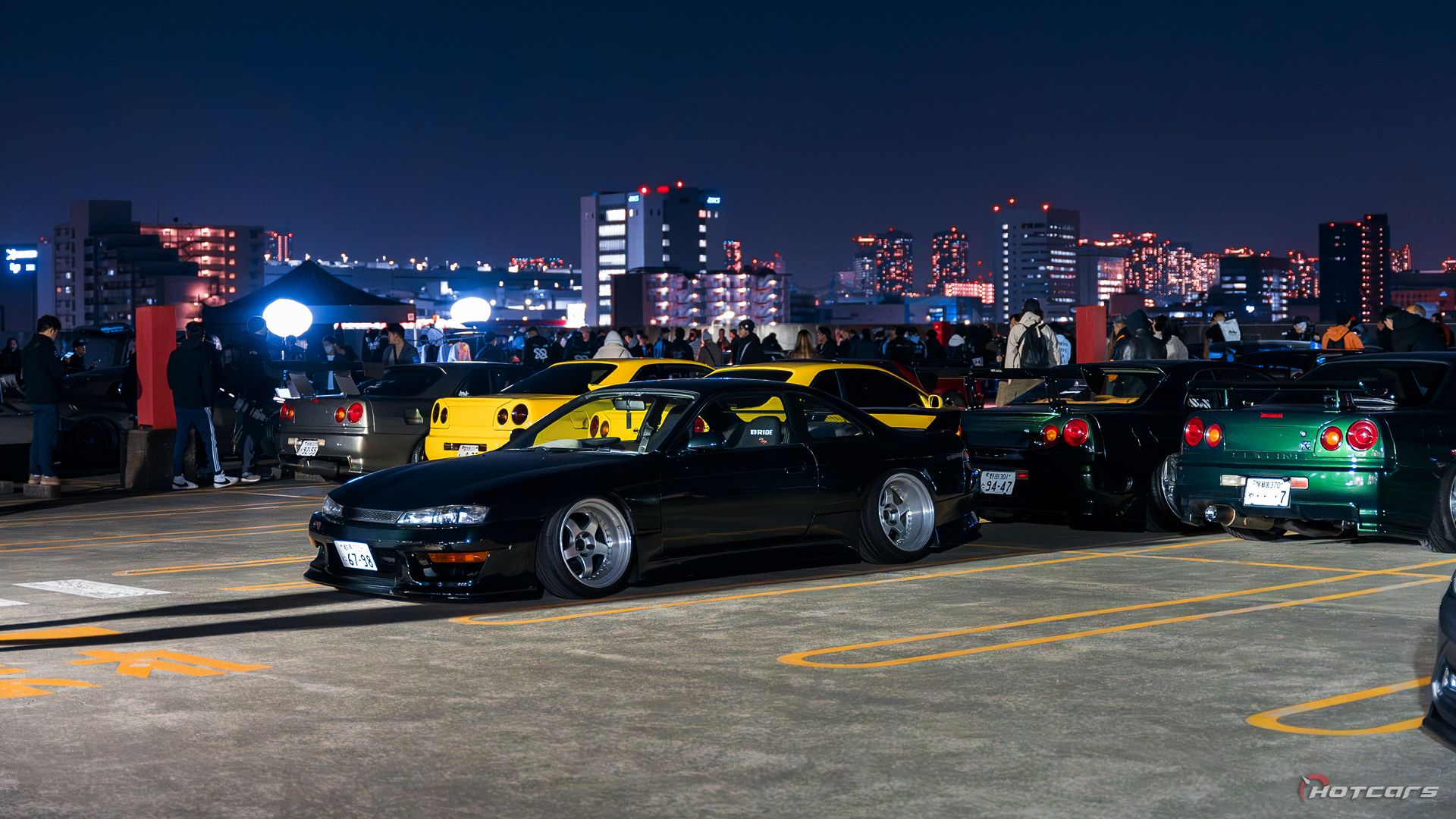Key Takeaways
- The Japanese car scene has two types of gatherings- open mainstream events and secret underground meets you only find out about later.
- The first Underground Tokyo Meet in 2023 was hidden below ground, featuring exclusive cars and a secretive, unforgettable vibe.
- The 2024 Underground Tokyo Meet lost its underground feel with mainstream tactics like public announcements and entry fees, veering from true car culture.
In the country of JDM cars galore, crazy supercars and touge drifting, stepping into the world of Japanese car culture is a pretty fascinating experience. While there is always something interesting happening in the Japanese car scene, you’ll roughly find two types of gatherings. On one hand, you’ll have more mainstream events that are out in the open, known by all, and accessible to all. On the other hand, you’ll have those car meets that you only find out about via Instagram posts uploaded a few days later. It’s the “if you know you know” type of gathering that you can only join with the help of a friend of a friend who knows someone with a cool car. This was the concept behind the secret “Underground Tokyo Meet” I attended last year.
Put together on the first night of the 2023 Tokyo Auto Salon, information about the event spread via word of mouth, and the meeting spot was privately announced on the morning of the gathering. Though a larger-than-expected audience showed up, the whole night was exclusive, selective, and secretive, until event pictures and videos hit social media. Overnight, it became the event that everyone was talking about, where you just had to be there to understand how special it was. With such success, the Underground Tokyo Meet was back for 2024 but the underground vibe wasn’t exactly there this year.
The First Underground Tokyo Meet In 2023
The very first Underground Tokyo Meet was nothing short of a real-life “Tokyo Drift” movie scene (without the drifting and racing). I had heard about the event from an acquaintance, and he seemed to also have heard it from a friend.
Held in one of Tokyo’s quietest and emptiest parts of town at night, the underground location was only accessible from a small elevator. The parking lot had a poor ventilation system and exhaust fumes were headache-inducing, but it somehow only made the night more memorable. The place had the right vibe: a small, concrete underground maze with low ceilings and cars wherever you look. The place was also small enough that you’d easily end up bumping into friends and acquaintances. Though the word about this car meet had spread out to a much wider audience than anyone had expected, the Underground Tokyo Meet had managed to keep its “underground-ness” vibe to it.
The Underground Tokyo Meet played on the dual meaning of its name, emphasizing both literal and figurative interpretations of the word “underground” to make the gathering a reality. Held below the ground, the meet gave those in attendance a taste of what the underground car culture was like here in Japan. You had to know the organizer personally if you wanted to bring your car. It was a carefully curated selection too, with rare models, cars with one-off body kits, and groups of cars that wouldn’t usually show up to your average, mainstream meet.
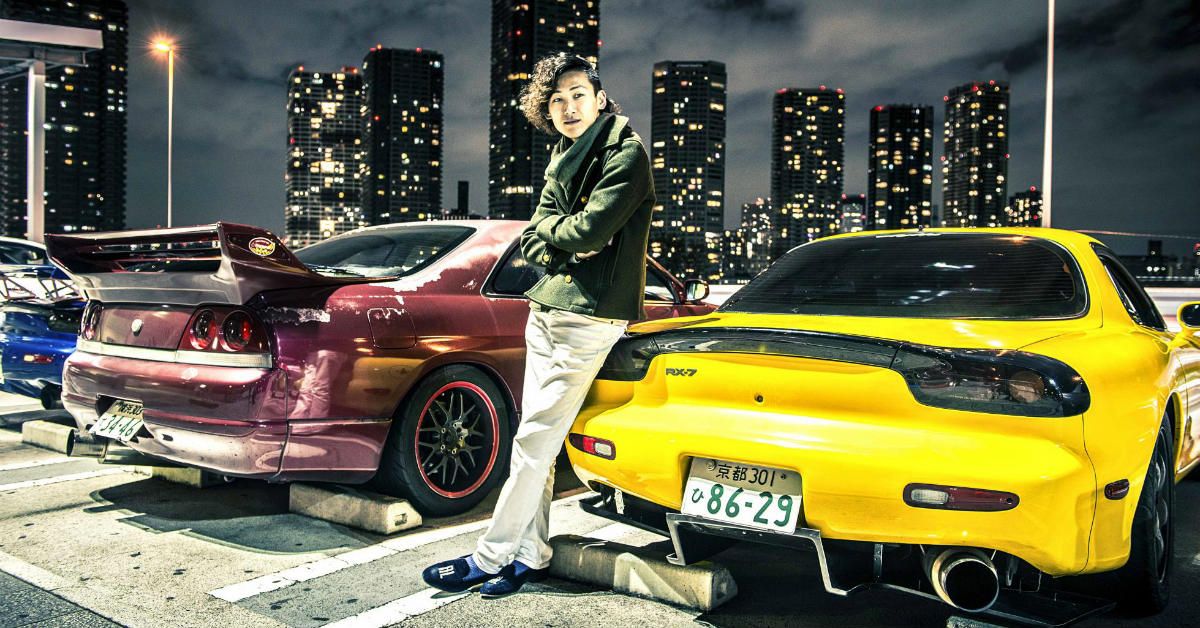
15 Sick Pics From Japan's Underground Car Scene
Who hasn't had a dream of living in Japan and racing souped-up JDM cars every night? Check out these sick pics from the Japanese car scene!
A Less Underground, More Mainstream Announcement
With the success the Underground Tokyo Meet received from its first edition, the meet was bound for a comeback. Those who had been to last year's meet were eager to take part in the new one and those who had only seen or heard about it online were eager to attend their first underground car meet in the heart of Tokyo.
Unlike last year’s secretive announcement, official information started rolling in a week before the event on the official Underground Tokyo Meet Instagram page, solving the problem of which contact I had to pull to get insider knowledge about the event. Instead of gatekeeping the information about the upcoming meet, the information was shared all over their social page with detailed information about the time and date of the event. However, that information alone would not get you in.
All those who wished to attend the meet were required to fill in a form and share their personal information for future news and promotions about the Underground Tokyo Meet’s freshly launched merchandise line. An entrance fee was also introduced, with different price tiers. Those who wished to post pictures of the event “to grow their Instagram following” were required to pay an entrance fee of ¥3,000 (approx. $20) and were allowed early entry to the parking lot at 6:00 PM. Those who did not wish to photograph the cars were allowed to enter at a much later hour of 8:00 PM, with a reduced entrance fee of $1,000 (approx. $7). With the event ending at 9:00 PM, coming as early as possible to enjoy the meeting for more than an hour meant that paying the premium price was the only sensible option.
The fee seemed excessive too. Keep in mind that major events such as the Tokyo Auto Salon, the Japan Mobility Show, or Stance Nation all charge an entry fee of ¥3,000 for the full day. Furthermore, what you get for ¥3,000 is access to the latest tuner cars at the Tokyo Auto Salon, a close look at manufacturers’ latest concept cars at the Japan Mobility Show, and over 900 modified cars coming from all over the country at Stance Nation.
An Awkward Location For An Underground Meet
To convey a sense of secrecy, the Underground Tokyo Meet announced the location to all registered email addresses on the morning of the meet. While last year’s underground, isolated parking lot in the heart of Tokyo brought a sense of thrill, this year’s spot was interesting to say the least. Located midway between the Tokyo city center and the Tokyo Auto Salon event halls, the space secured for this meet turned out to be the rooftop floor of a shopping mall’s parking lot, in the heart of a peaceful suburban neighborhood.
Once inside the shopping mall, you had to make your way through a large supermarket to get to the elevator that would take you to the rooftop parking. The atmosphere felt awkward at best, with locals looking at you with a curious eye, wondering why so many foreigners were walking into a grocery store in such an uneventful part of town.
The whole itinerary for the rooftop parking lot wasn’t exactly what you’d call straightforward. Taking the elevator straight to the rooftop led you to a tennis club that occupied the other half of the event's rooftop floor. Instead, you had to access the meeting spot from the floor below.
A Mainstream Car Meet With Cool Cars
Eventually, I did manage to make my way to the fourth floor. From there, a ramp led to the rooftop where quite a big group of cars had already arrived. As I paid the hefty entrance fee at the reception desk, I walked into the event only to find out how dark the rooftop parking was. Right next to the entrance, I noticed a tent with merch clothing displayed on tables and hangers. The products were well-lit, thanks to one of the rare spotlights the organizers had set up on the event floor. The majority of the cars were parked in the dark and only those parked closer to the tennis court or near the shopping mall’s neon-lit sign were more visible. Coming straight from the Tokyo Auto Salon, I had not brought any tripod or lighting equipment. Bumping down my camera’s shutter speed and increasing the ISO to unthinkable levels seemed to be the only way to get anything photographed… Plus a heavy round of Photoshop at home to make the pictures publishable.
To bring a sense of exclusivity to the meet, the organizers had collaborated with Nissan to create a small exhibition space next to the merch tent. There, the Nissan Hyperforce concept car revealed at the Japan Mobility Show and the original Nissan Skyline Super Silhouette race car from the Nissan Heritage Collection were on display. Yet without any proper lighting, a small barrier around the cars, and a crowd of people surrounding it, there was unfortunately not much to see. Or at least, nothing I had not seen at the Japan Mobility Show and at the Nissan Crossing in Ginza where the two cars were previously displayed.
The parking lot was relatively big and capable of hosting a little over a hundred cars. On the rooftop floor, quite a few of the cars in attendance were carried over from last year’s meet. Just to name a few, I had already seen the orange Lamborghini Diablo, the RWB cars, the “Fast & Furious” R34 Skyline, and VeilSide RX-7 at countless events before. In search of something new to look at, I headed down to the floor below. The fourth floor was more brightly lit and quite a few owners had decided to park their cars there. Not only did I get to see the cars arrive one after the other, the selection was also a bit more exciting too. I noticed a Techart Porsche Taycan, a white RWB I had not seen before, a crazy line-up of Nissan Skylines and even a 1-of-50 Nissan GTR-50 by Italdesign.
By 8:00 PM and with one hour left to go, the queue at the reception desk had stretched from the rooftop to the fourth floor. The rooftop had gotten much more crowded too; more attendees were still coming in and the meet had fully taken over both floors. Every 30 minutes or so, someone from the organizing team would come down to the fourth floor and shout “Please do not stay here, head to the rooftop floor!” Yet with the variety of cars parked there and the sheer number of people, attempts at crowd control remained unsuccessful.
Walking around, I noticed several groups of foreign visitors walking around the cars, holding beer and shochu cans that they had likely bought from the supermarket on the first floor. The car meet was still going on strong, but it was clearly getting lousy. I took it as a sign that it was time for me to go home.
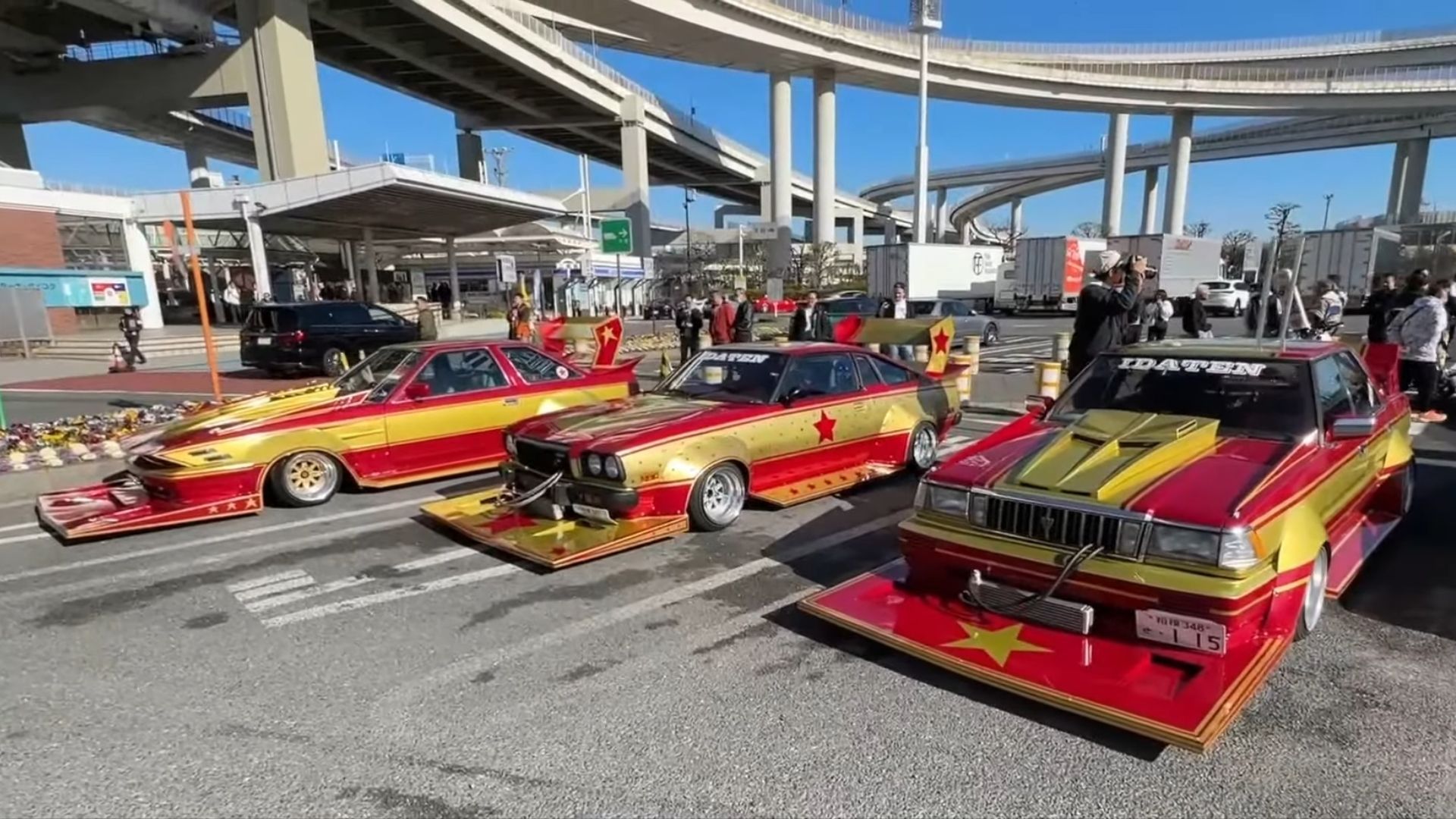
Find Out Why The Police Decided To Shut Down This Japanese Car Meet
The iconic Daikoku Area in Tokyo is under threat thanks to trespassers and complaints about noise in the parking lot.
Where Is The Real Japanese Underground Car Culture At?
“Underground” defines the groups and cultures that exist outside of the mainstream, established, and widely accepted culture. Additionally, what is classified as underground is exclusive, hidden, and at times even illegal, hence the necessity for secrecy. By definition, underground culture and, in this case, underground car culture, isn’t something that is accessible to all.
What had started a year ago as an attempt at a genuine glimpse into Japan’s underground car culture had too rapidly turned into a sloppily executed, cash-grab operation in 2024. Accessible to all as long as you traded in your email address and a few thousand yen notes, the event felt no different than a mainstream automotive event, except with fewer cars, less time to look at the cars, and a lot less light to see the cars.
With the success the first edition of the Underground Tokyo Meet had received on social media platforms, the event was bound to open its doors to a much wider audience. Yet this strong online presence couldn’t coexist with the secrecy and exclusivity that was needed to give a genuine “underground” feel to the event. Monetizing the underground car culture put the Underground Tokyo Meet at an awkward standpoint: attempting to immerse the audience into underground car culture, yet monetizing and publicizing the meet without providing the right infrastructure for such a large public event.
The thing is, underground car culture isn’t something you can pay for, sign up for or follow on Instagram. Street racers, touge drifters, lowriders, kaido racers, itasha owners, bosozoku bikers are some of the subcultures that exist within the Japanese automotive world. While some groups tend to be more out there than others with occasional public meets, little information comes out and these tight-knit groups keep their activities private. It’s “underground” in the true sense of the word. If you’re lucky, you’ll stumble on a group of kaido racers stopping by Daikoku Futo, or bosozoku bikers hanging out in a touge parking lot, but you won’t find online information about their next meet-up. That’s the thrill of it, and that is precisely what keeps us all so fascinated with Japan’s unique car culture. As the Underground Tokyo Meet proved this year, underground car culture isn’t something that can be tamed. But to tick one of the two boxes, it would have been nice if the meet was at least hosted underground.
